Economic Principles and Decision Making
VerifiedAdded on 2022/12/29
|19
|1325
|79
Presentation
AI Summary
This presentation discusses the economic principles and decision making process in Australia. It covers the growth performance of Australia, current performance of the Australian economy, factors behind the decline in economic growth, housing market, slowdown in economic growth of China, decline in household consumption, decline in average wage growth, and the impact of monetary policy on economic growth. The presentation provides an overview of the current status of the economy and justifies the decision of monetary policy expansion.
Contribute Materials
Your contribution can guide someone’s learning journey. Share your
documents today.

Economic Principles and Decision
Making
Name of the Student
Name of the University
Course ID
Making
Name of the Student
Name of the University
Course ID
Secure Best Marks with AI Grader
Need help grading? Try our AI Grader for instant feedback on your assignments.
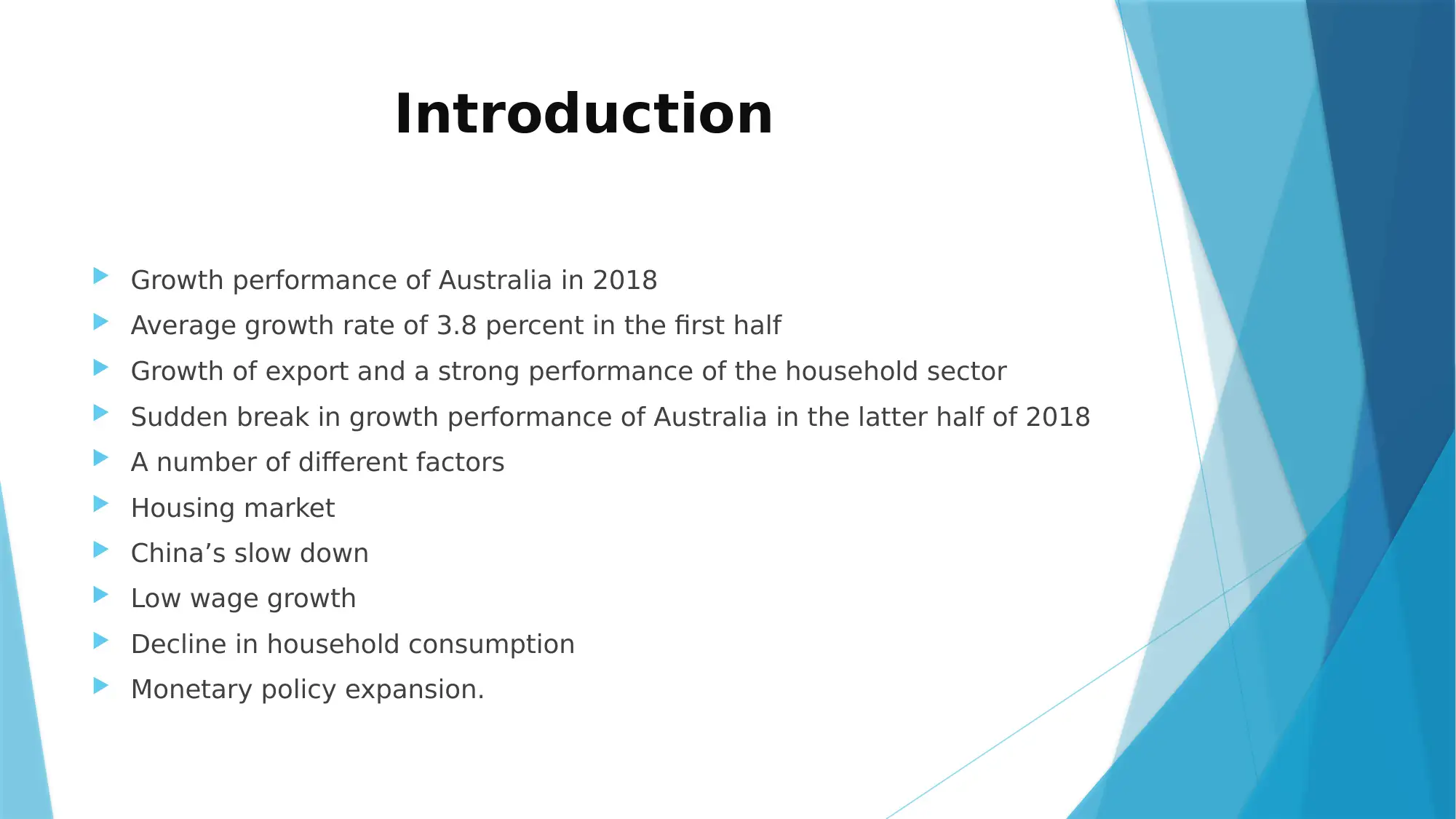
Introduction
Growth performance of Australia in 2018
Average growth rate of 3.8 percent in the first half
Growth of export and a strong performance of the household sector
Sudden break in growth performance of Australia in the latter half of 2018
A number of different factors
Housing market
China’s slow down
Low wage growth
Decline in household consumption
Monetary policy expansion.
Growth performance of Australia in 2018
Average growth rate of 3.8 percent in the first half
Growth of export and a strong performance of the household sector
Sudden break in growth performance of Australia in the latter half of 2018
A number of different factors
Housing market
China’s slow down
Low wage growth
Decline in household consumption
Monetary policy expansion.
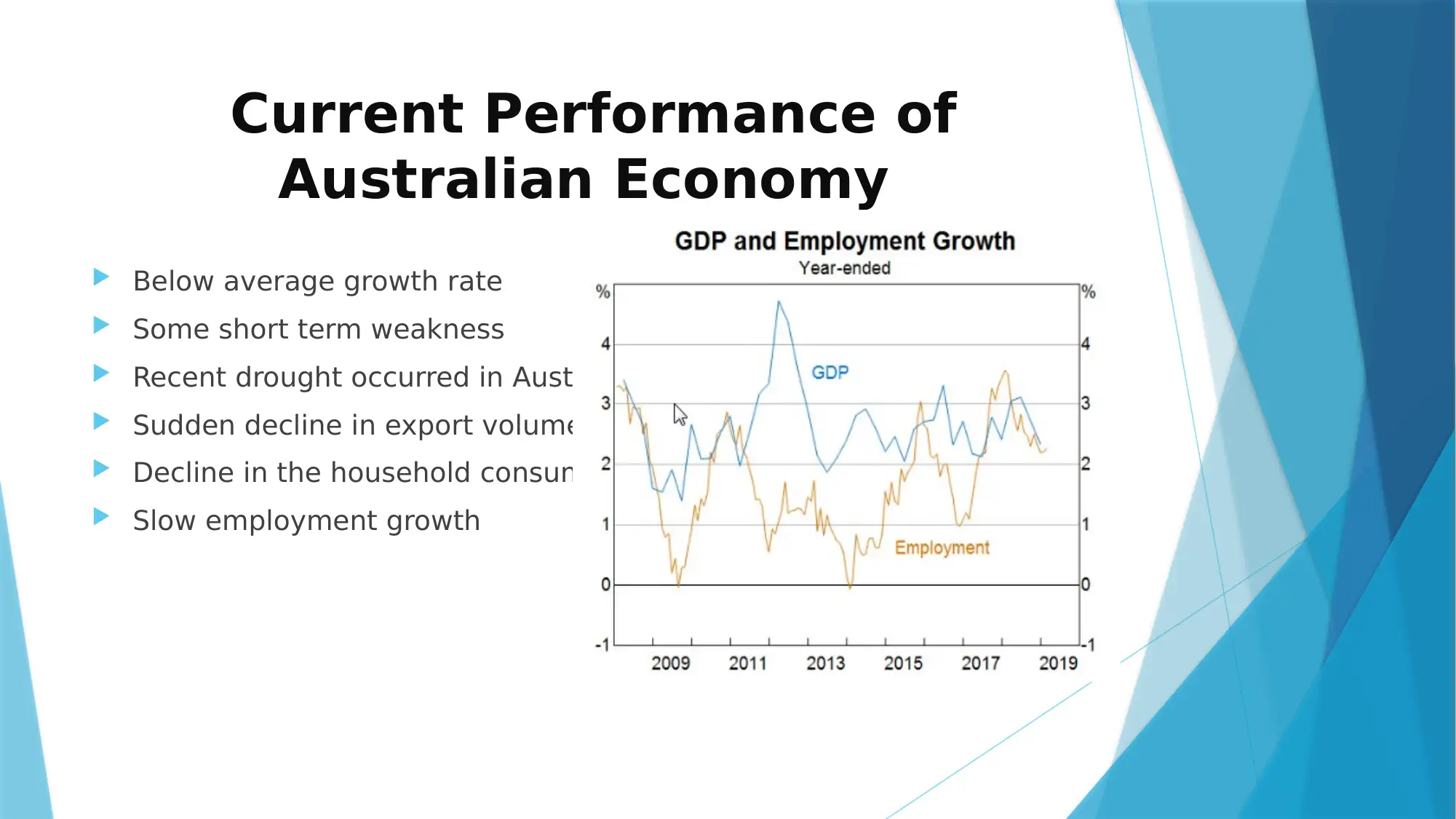
Current Performance of
Australian Economy
Below average growth rate
Some short term weakness
Recent drought occurred in Australia
Sudden decline in export volume
Decline in the household consumption
Slow employment growth
Australian Economy
Below average growth rate
Some short term weakness
Recent drought occurred in Australia
Sudden decline in export volume
Decline in the household consumption
Slow employment growth
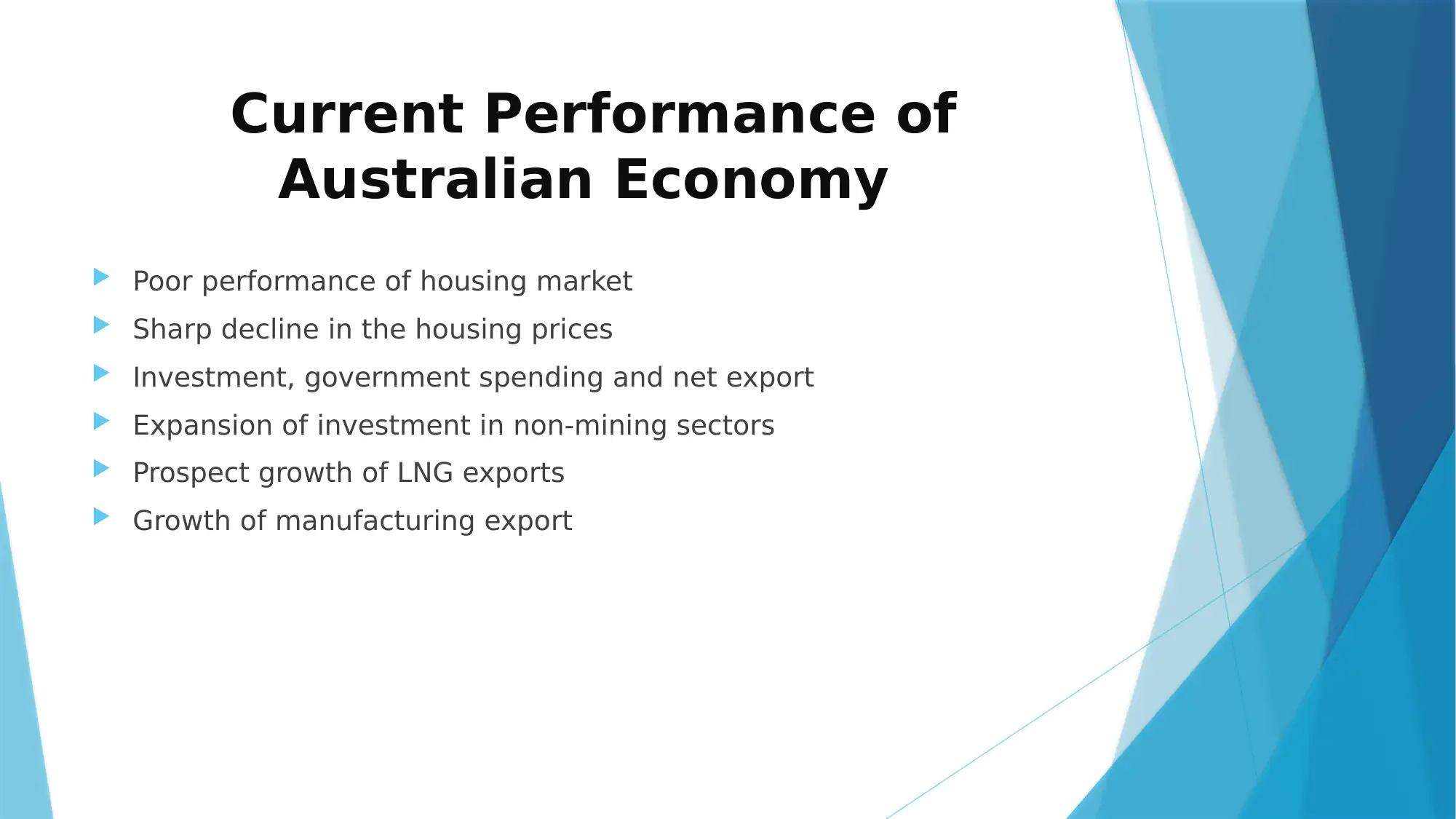
Current Performance of
Australian Economy
Poor performance of housing market
Sharp decline in the housing prices
Investment, government spending and net export
Expansion of investment in non-mining sectors
Prospect growth of LNG exports
Growth of manufacturing export
Australian Economy
Poor performance of housing market
Sharp decline in the housing prices
Investment, government spending and net export
Expansion of investment in non-mining sectors
Prospect growth of LNG exports
Growth of manufacturing export
Secure Best Marks with AI Grader
Need help grading? Try our AI Grader for instant feedback on your assignments.
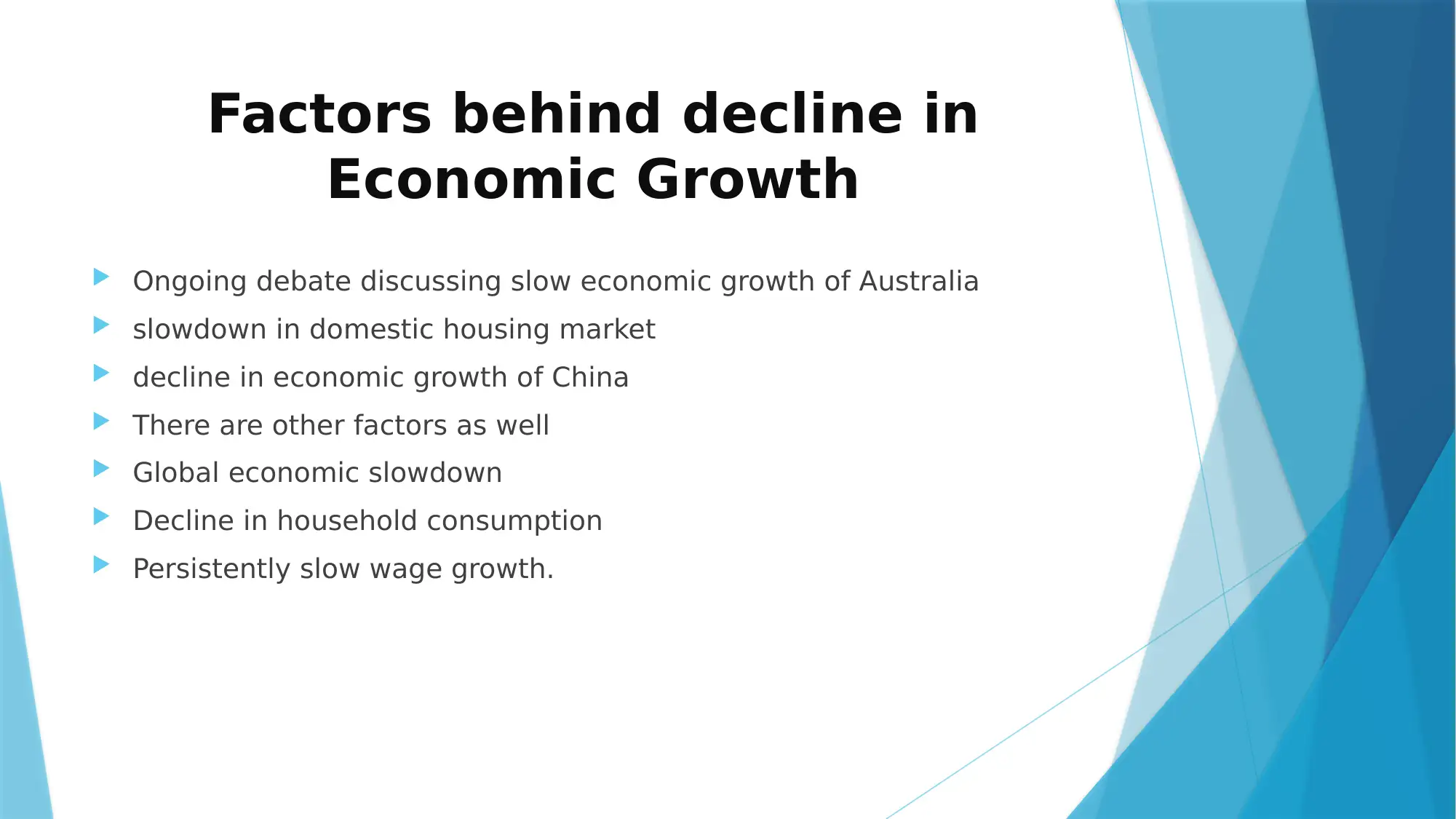
Factors behind decline in
Economic Growth
Ongoing debate discussing slow economic growth of Australia
slowdown in domestic housing market
decline in economic growth of China
There are other factors as well
Global economic slowdown
Decline in household consumption
Persistently slow wage growth.
Economic Growth
Ongoing debate discussing slow economic growth of Australia
slowdown in domestic housing market
decline in economic growth of China
There are other factors as well
Global economic slowdown
Decline in household consumption
Persistently slow wage growth.

Housing Market
An important part of Australian economy
Continuous increase in dwelling investment
Steady upward trend of housing price
Housing price has started to decline
Sydney and Melbourne
First downward movement in price in the last five years
Increase in supply of houses in the capital cities
Difference in housing market of Sydney and Melbourne
Absorption of excess supply
An important part of Australian economy
Continuous increase in dwelling investment
Steady upward trend of housing price
Housing price has started to decline
Sydney and Melbourne
First downward movement in price in the last five years
Increase in supply of houses in the capital cities
Difference in housing market of Sydney and Melbourne
Absorption of excess supply
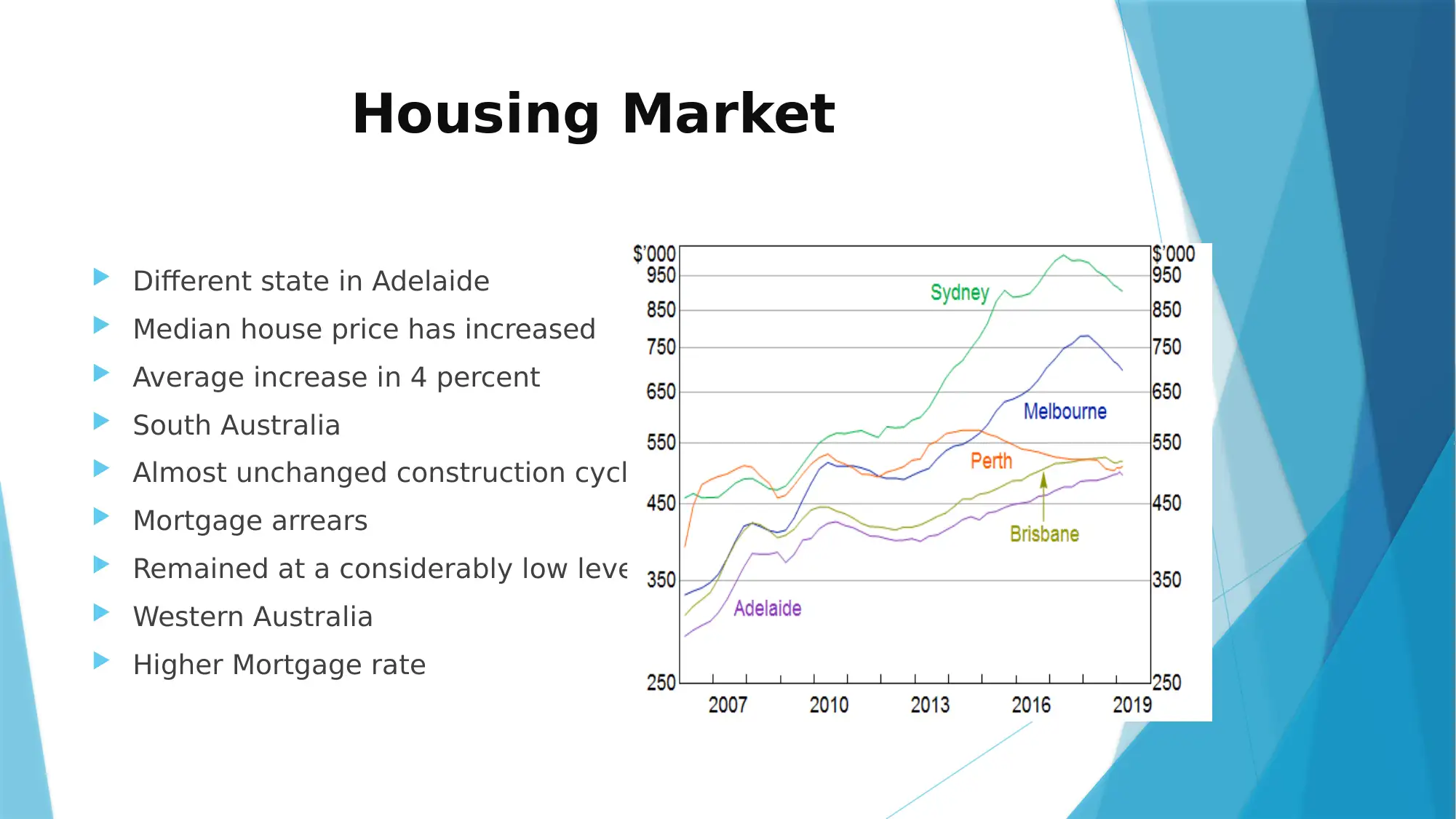
Housing Market
Different state in Adelaide
Median house price has increased
Average increase in 4 percent
South Australia
Almost unchanged construction cycle
Mortgage arrears
Remained at a considerably low level
Western Australia
Higher Mortgage rate
Different state in Adelaide
Median house price has increased
Average increase in 4 percent
South Australia
Almost unchanged construction cycle
Mortgage arrears
Remained at a considerably low level
Western Australia
Higher Mortgage rate
Paraphrase This Document
Need a fresh take? Get an instant paraphrase of this document with our AI Paraphraser
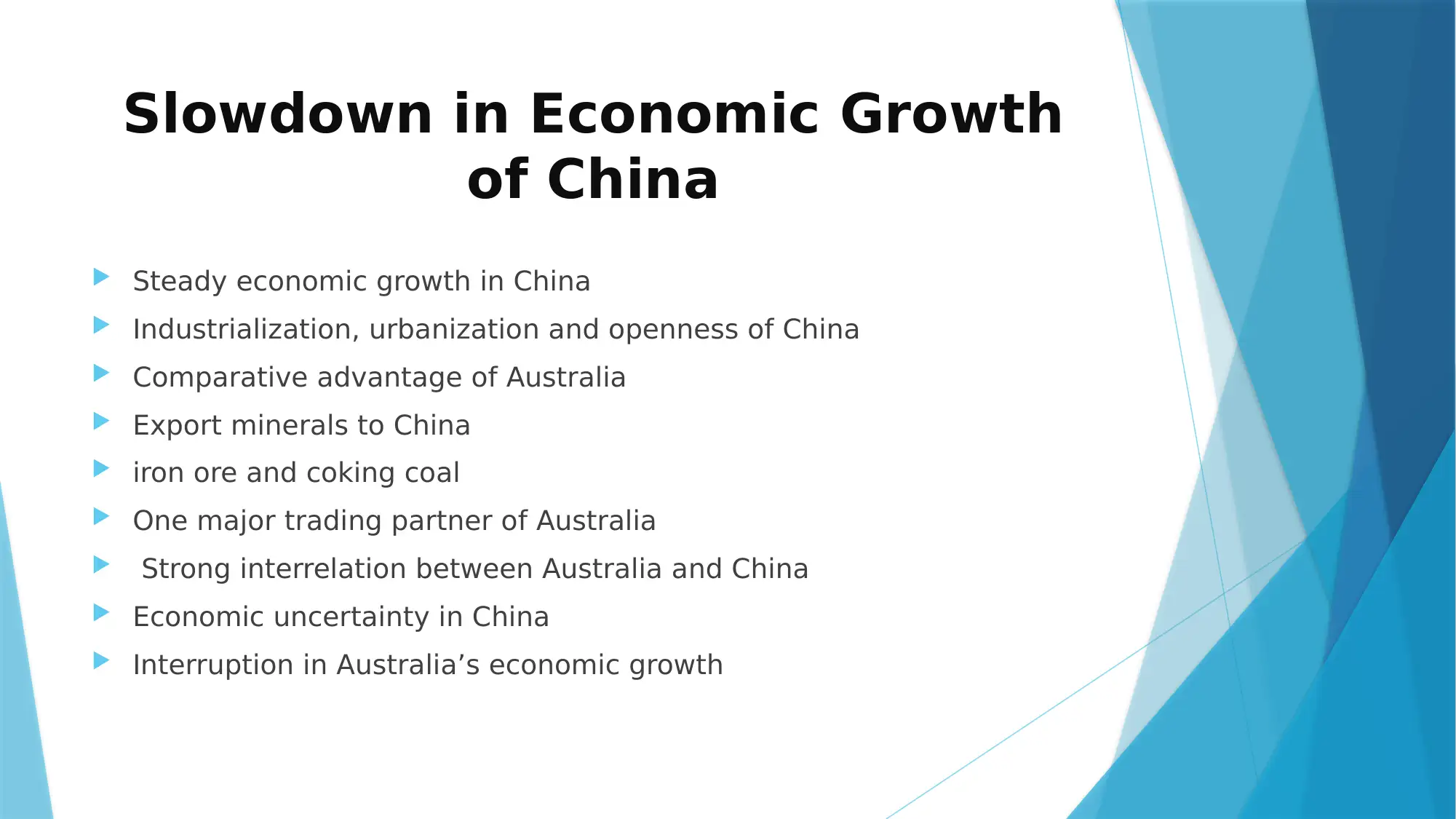
Slowdown in Economic Growth
of China
Steady economic growth in China
Industrialization, urbanization and openness of China
Comparative advantage of Australia
Export minerals to China
iron ore and coking coal
One major trading partner of Australia
Strong interrelation between Australia and China
Economic uncertainty in China
Interruption in Australia’s economic growth
of China
Steady economic growth in China
Industrialization, urbanization and openness of China
Comparative advantage of Australia
Export minerals to China
iron ore and coking coal
One major trading partner of Australia
Strong interrelation between Australia and China
Economic uncertainty in China
Interruption in Australia’s economic growth
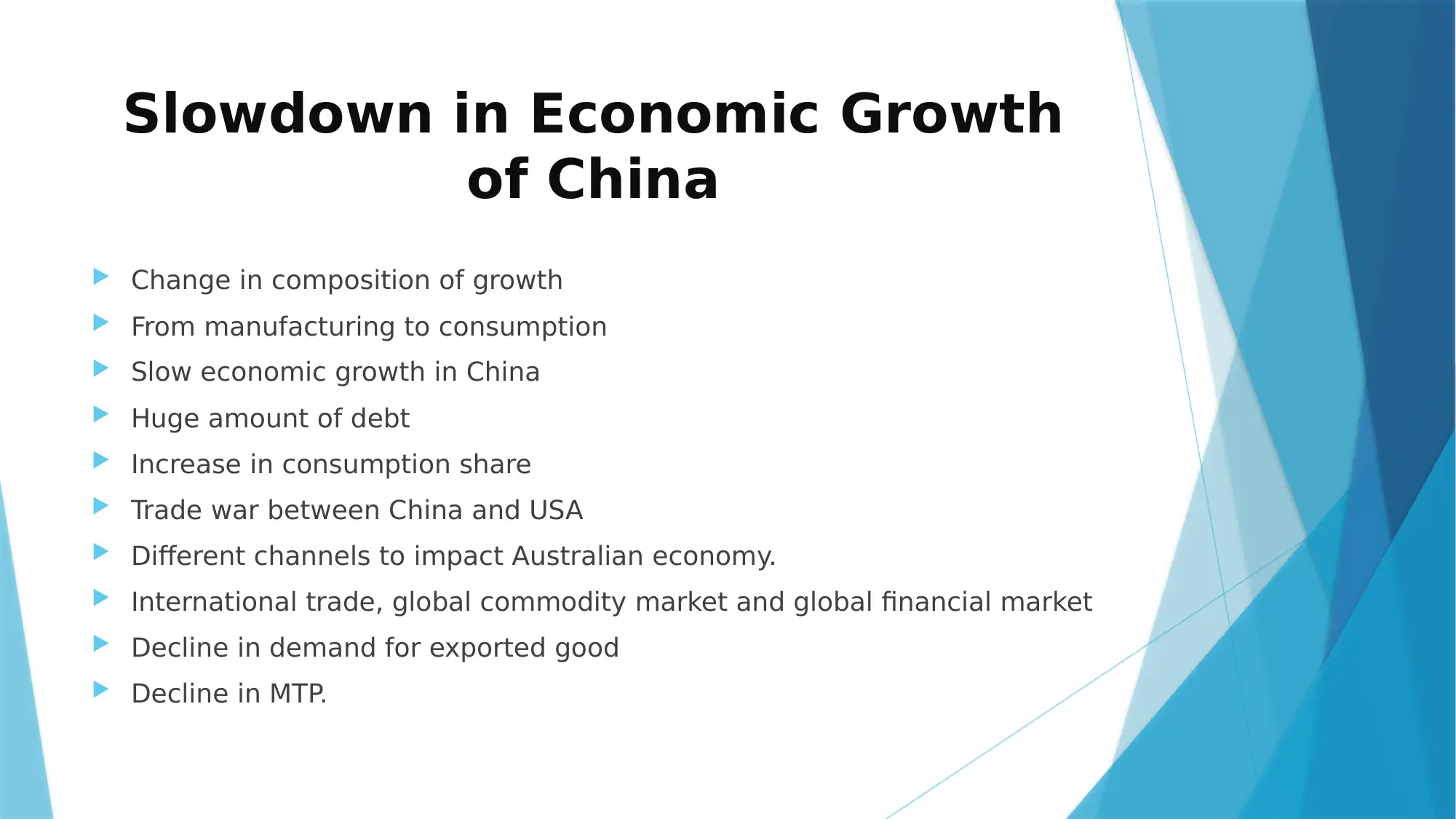
Slowdown in Economic Growth
of China
Change in composition of growth
From manufacturing to consumption
Slow economic growth in China
Huge amount of debt
Increase in consumption share
Trade war between China and USA
Different channels to impact Australian economy.
International trade, global commodity market and global financial market
Decline in demand for exported good
Decline in MTP.
of China
Change in composition of growth
From manufacturing to consumption
Slow economic growth in China
Huge amount of debt
Increase in consumption share
Trade war between China and USA
Different channels to impact Australian economy.
International trade, global commodity market and global financial market
Decline in demand for exported good
Decline in MTP.
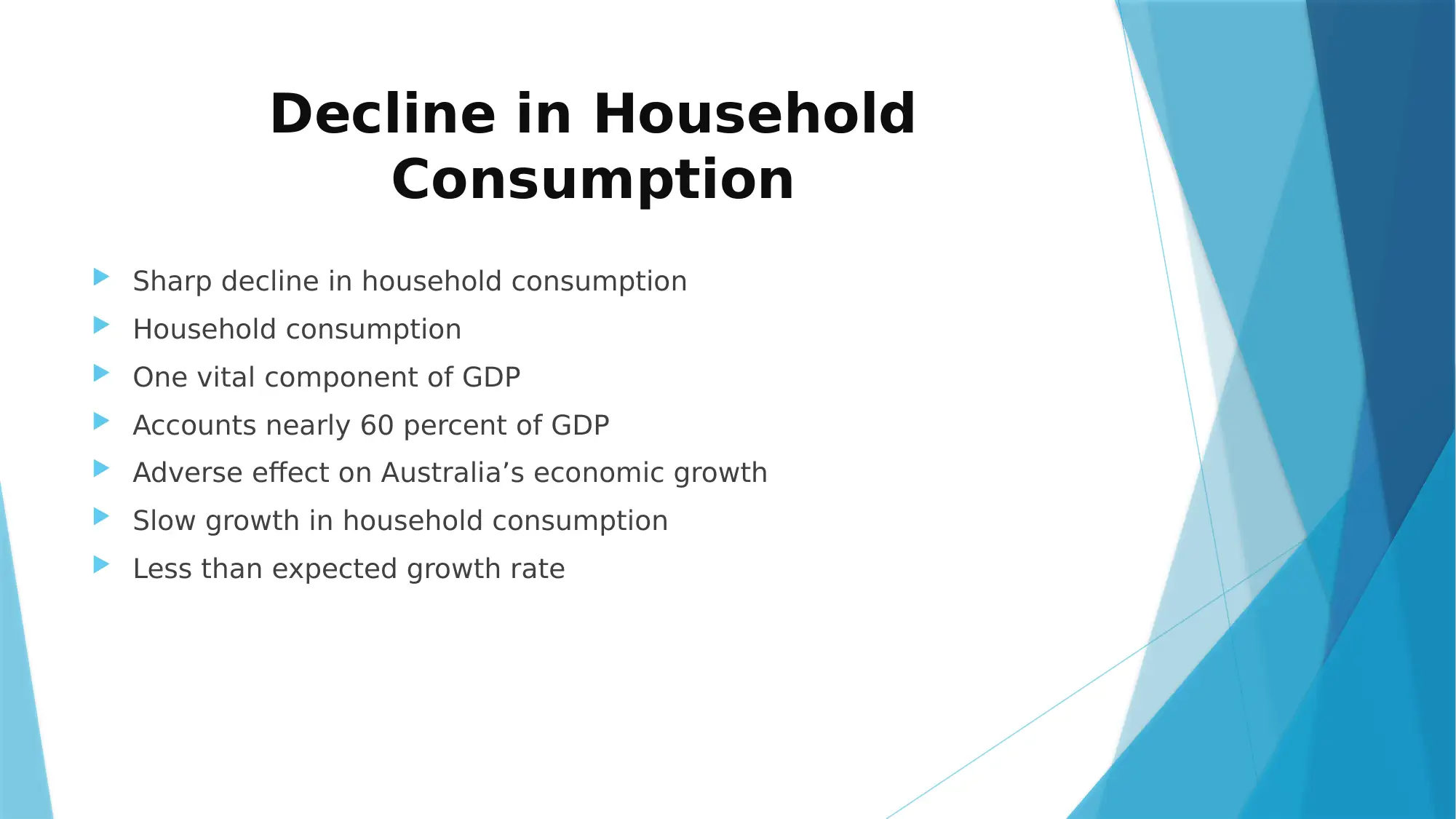
Decline in Household
Consumption
Sharp decline in household consumption
Household consumption
One vital component of GDP
Accounts nearly 60 percent of GDP
Adverse effect on Australia’s economic growth
Slow growth in household consumption
Less than expected growth rate
Consumption
Sharp decline in household consumption
Household consumption
One vital component of GDP
Accounts nearly 60 percent of GDP
Adverse effect on Australia’s economic growth
Slow growth in household consumption
Less than expected growth rate
Secure Best Marks with AI Grader
Need help grading? Try our AI Grader for instant feedback on your assignments.
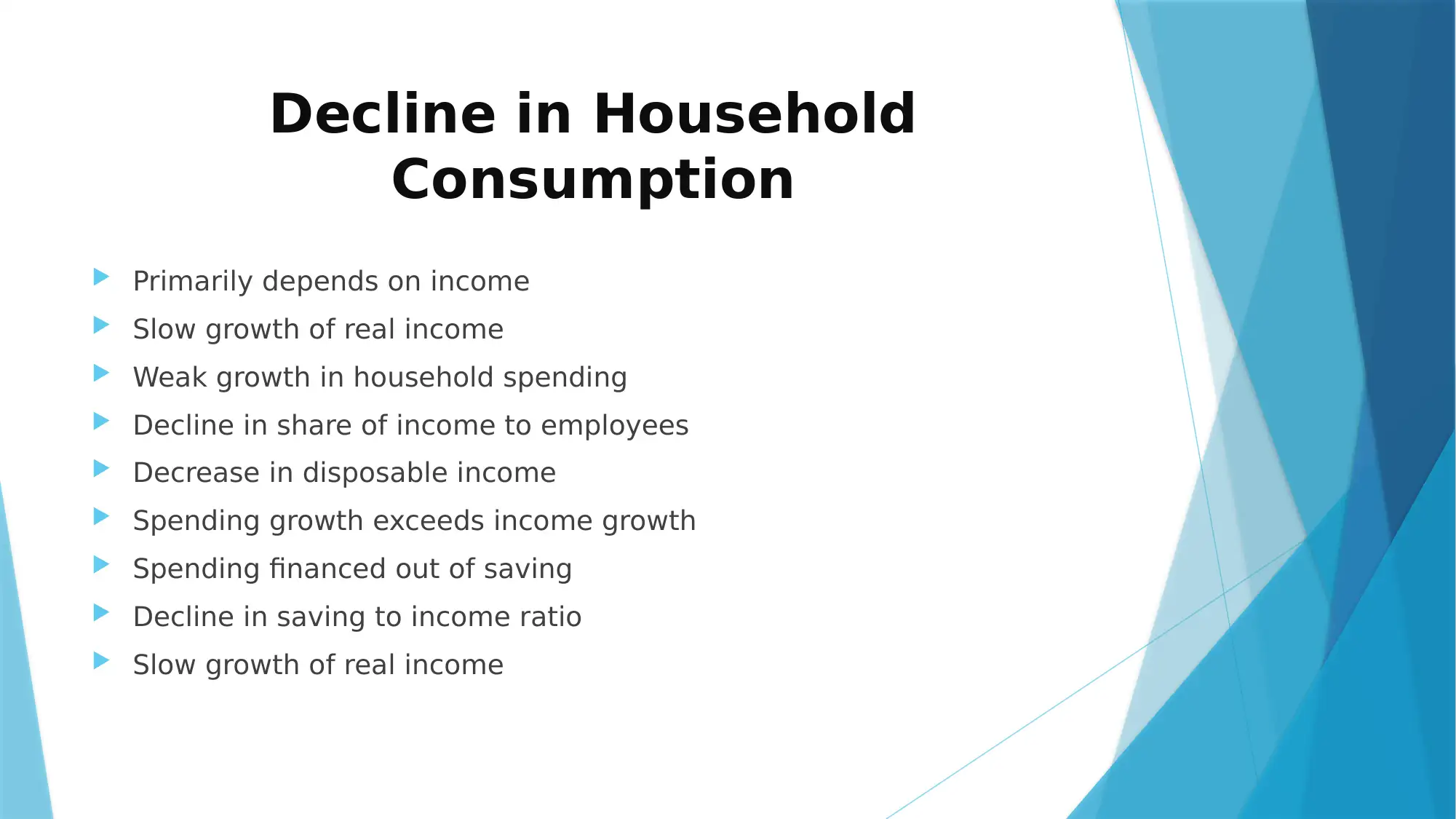
Decline in Household
Consumption
Primarily depends on income
Slow growth of real income
Weak growth in household spending
Decline in share of income to employees
Decrease in disposable income
Spending growth exceeds income growth
Spending financed out of saving
Decline in saving to income ratio
Slow growth of real income
Consumption
Primarily depends on income
Slow growth of real income
Weak growth in household spending
Decline in share of income to employees
Decrease in disposable income
Spending growth exceeds income growth
Spending financed out of saving
Decline in saving to income ratio
Slow growth of real income
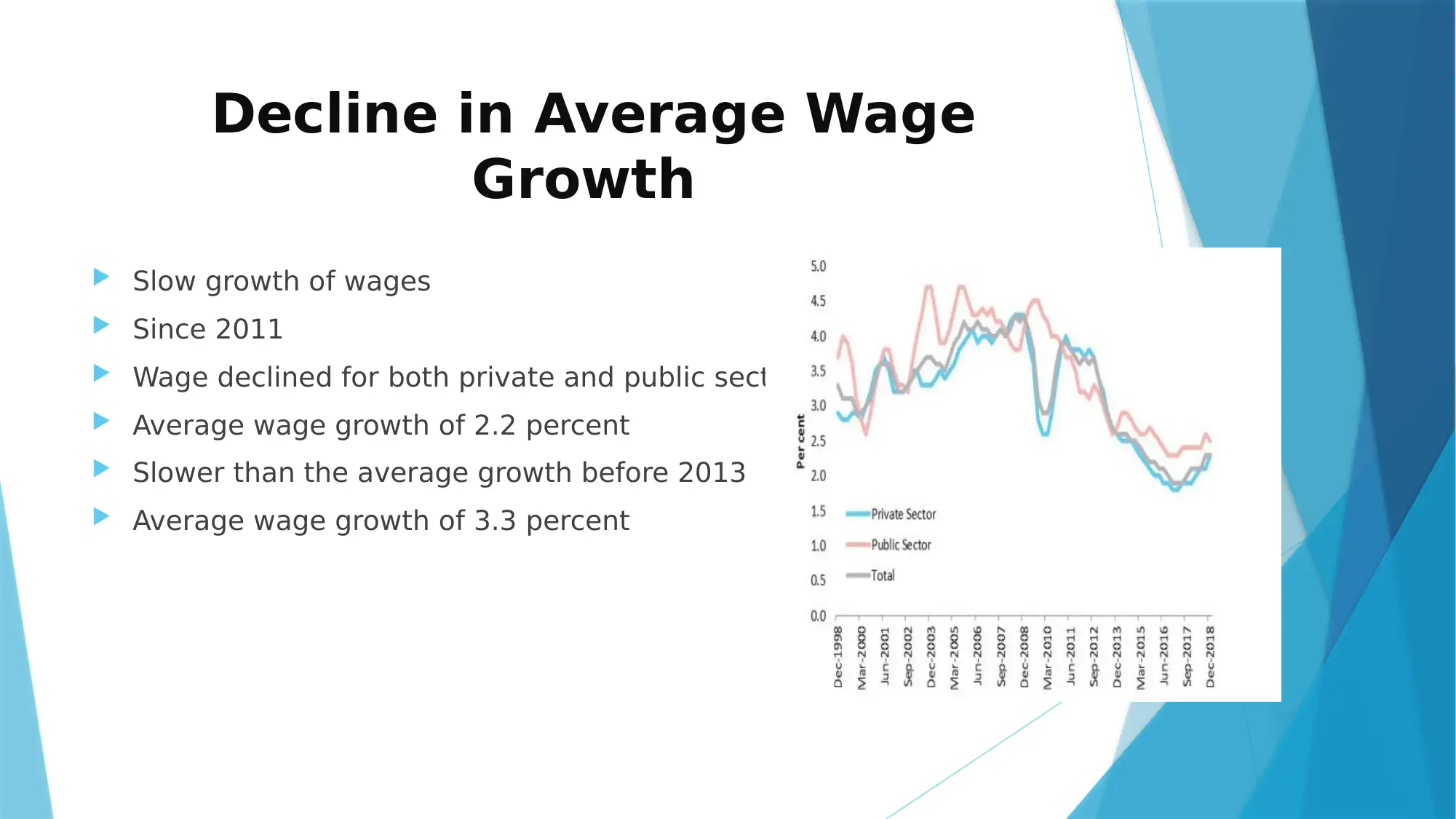
Decline in Average Wage
Growth
Slow growth of wages
Since 2011
Wage declined for both private and public sector
Average wage growth of 2.2 percent
Slower than the average growth before 2013
Average wage growth of 3.3 percent
Growth
Slow growth of wages
Since 2011
Wage declined for both private and public sector
Average wage growth of 2.2 percent
Slower than the average growth before 2013
Average wage growth of 3.3 percent
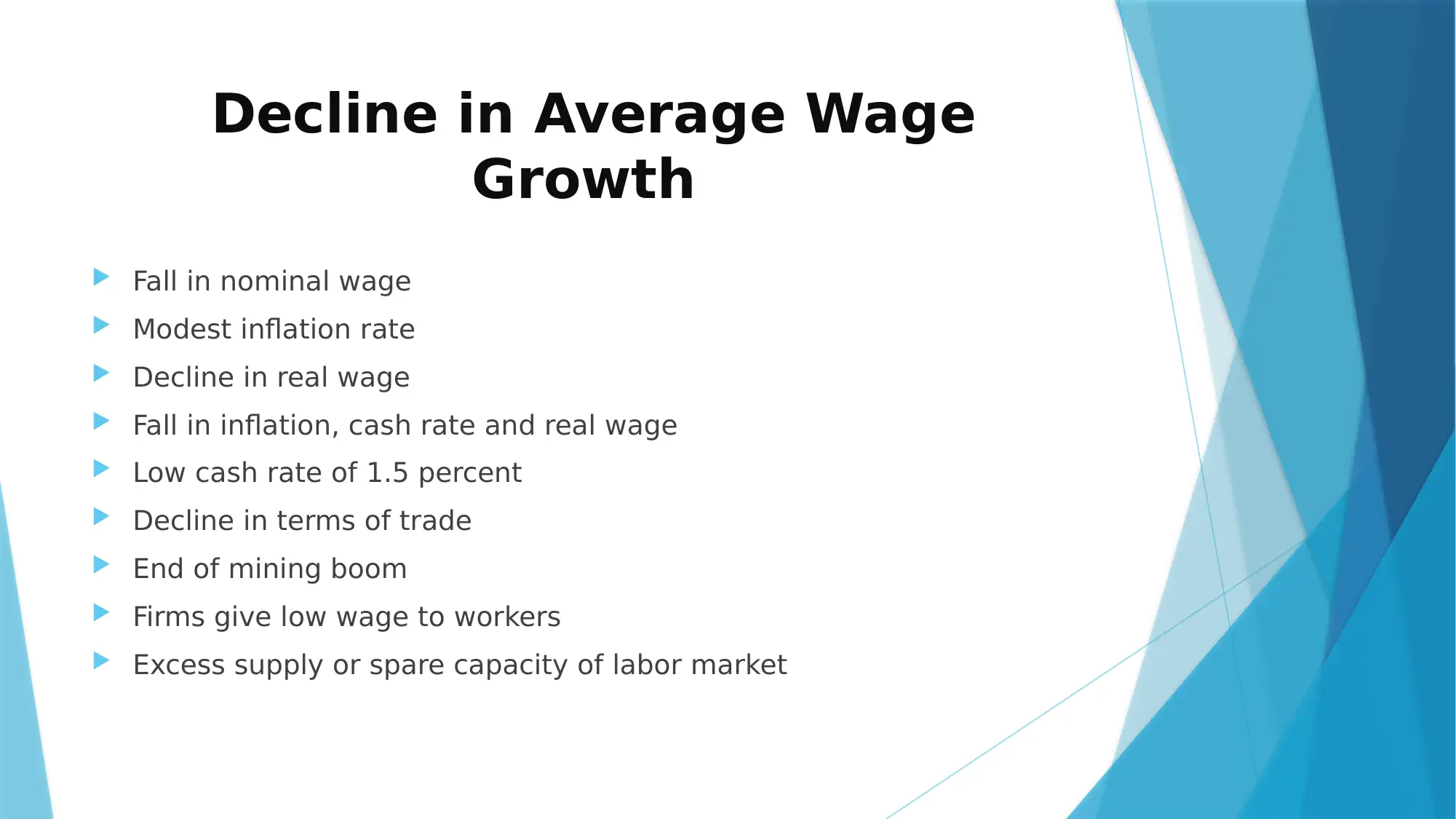
Decline in Average Wage
Growth
Fall in nominal wage
Modest inflation rate
Decline in real wage
Fall in inflation, cash rate and real wage
Low cash rate of 1.5 percent
Decline in terms of trade
End of mining boom
Firms give low wage to workers
Excess supply or spare capacity of labor market
Growth
Fall in nominal wage
Modest inflation rate
Decline in real wage
Fall in inflation, cash rate and real wage
Low cash rate of 1.5 percent
Decline in terms of trade
End of mining boom
Firms give low wage to workers
Excess supply or spare capacity of labor market
Paraphrase This Document
Need a fresh take? Get an instant paraphrase of this document with our AI Paraphraser
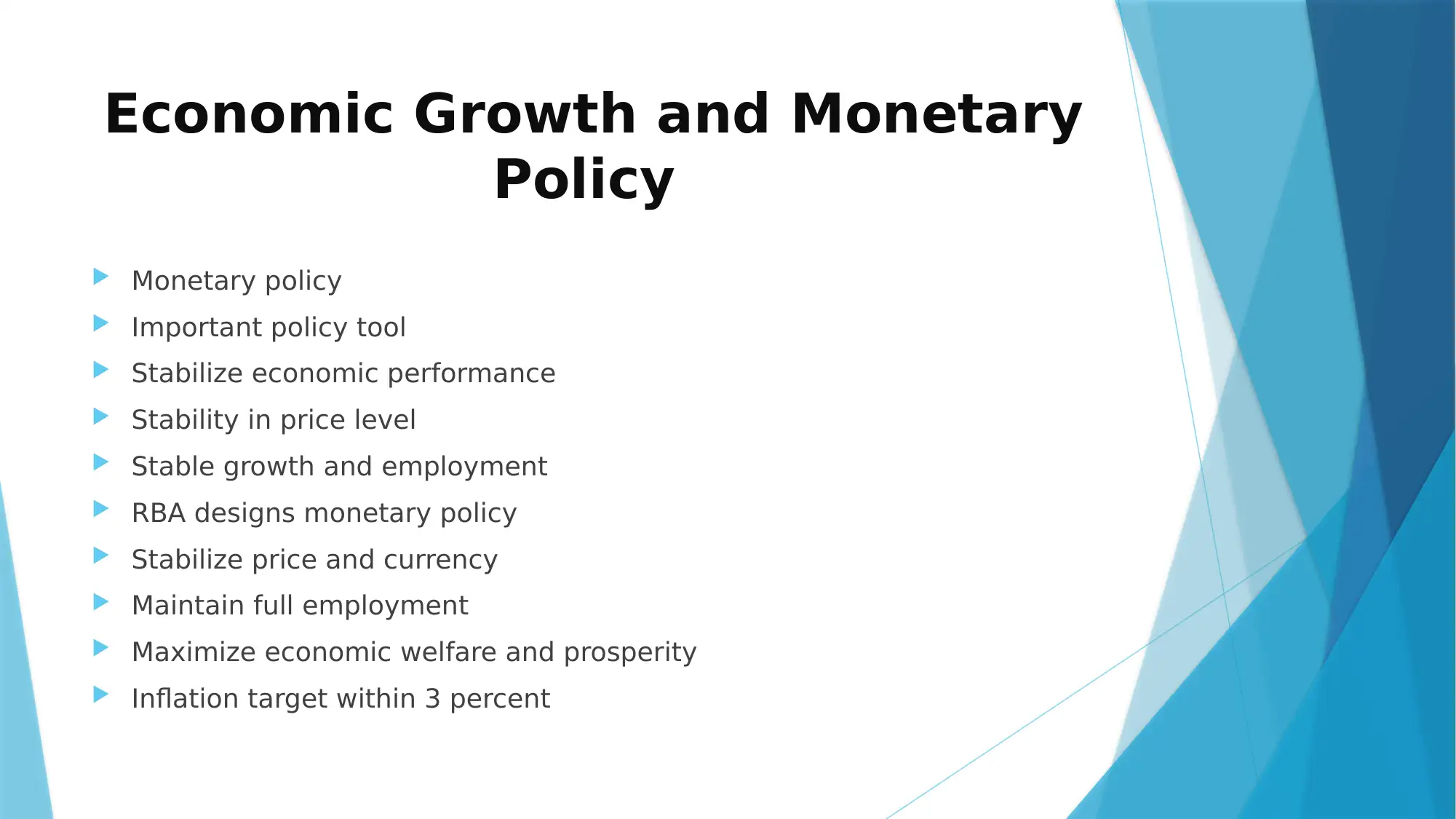
Economic Growth and Monetary
Policy
Monetary policy
Important policy tool
Stabilize economic performance
Stability in price level
Stable growth and employment
RBA designs monetary policy
Stabilize price and currency
Maintain full employment
Maximize economic welfare and prosperity
Inflation target within 3 percent
Policy
Monetary policy
Important policy tool
Stabilize economic performance
Stability in price level
Stable growth and employment
RBA designs monetary policy
Stabilize price and currency
Maintain full employment
Maximize economic welfare and prosperity
Inflation target within 3 percent
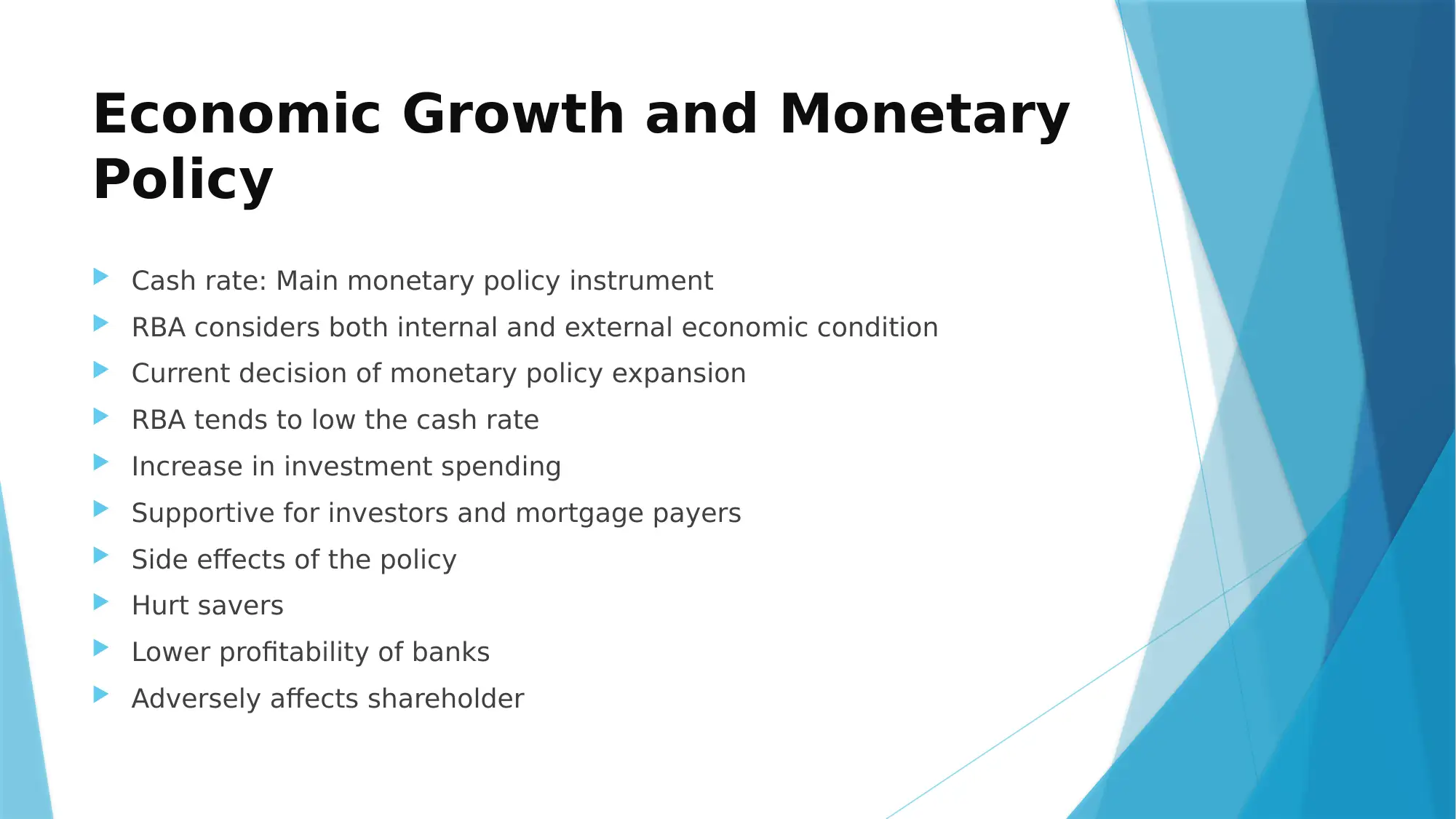
Economic Growth and Monetary
Policy
Cash rate: Main monetary policy instrument
RBA considers both internal and external economic condition
Current decision of monetary policy expansion
RBA tends to low the cash rate
Increase in investment spending
Supportive for investors and mortgage payers
Side effects of the policy
Hurt savers
Lower profitability of banks
Adversely affects shareholder
Policy
Cash rate: Main monetary policy instrument
RBA considers both internal and external economic condition
Current decision of monetary policy expansion
RBA tends to low the cash rate
Increase in investment spending
Supportive for investors and mortgage payers
Side effects of the policy
Hurt savers
Lower profitability of banks
Adversely affects shareholder
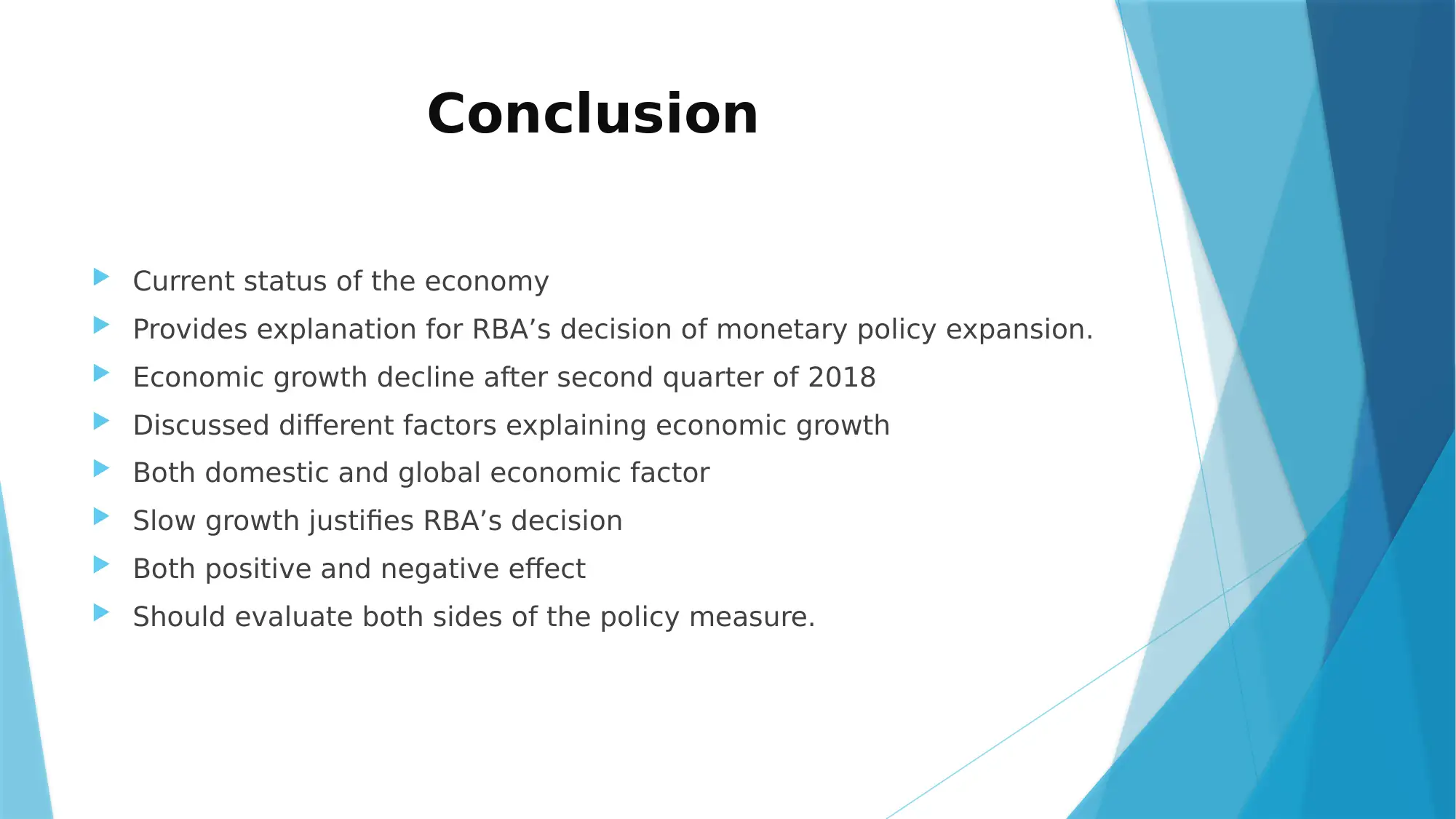
Conclusion
Current status of the economy
Provides explanation for RBA’s decision of monetary policy expansion.
Economic growth decline after second quarter of 2018
Discussed different factors explaining economic growth
Both domestic and global economic factor
Slow growth justifies RBA’s decision
Both positive and negative effect
Should evaluate both sides of the policy measure.
Current status of the economy
Provides explanation for RBA’s decision of monetary policy expansion.
Economic growth decline after second quarter of 2018
Discussed different factors explaining economic growth
Both domestic and global economic factor
Slow growth justifies RBA’s decision
Both positive and negative effect
Should evaluate both sides of the policy measure.
Secure Best Marks with AI Grader
Need help grading? Try our AI Grader for instant feedback on your assignments.
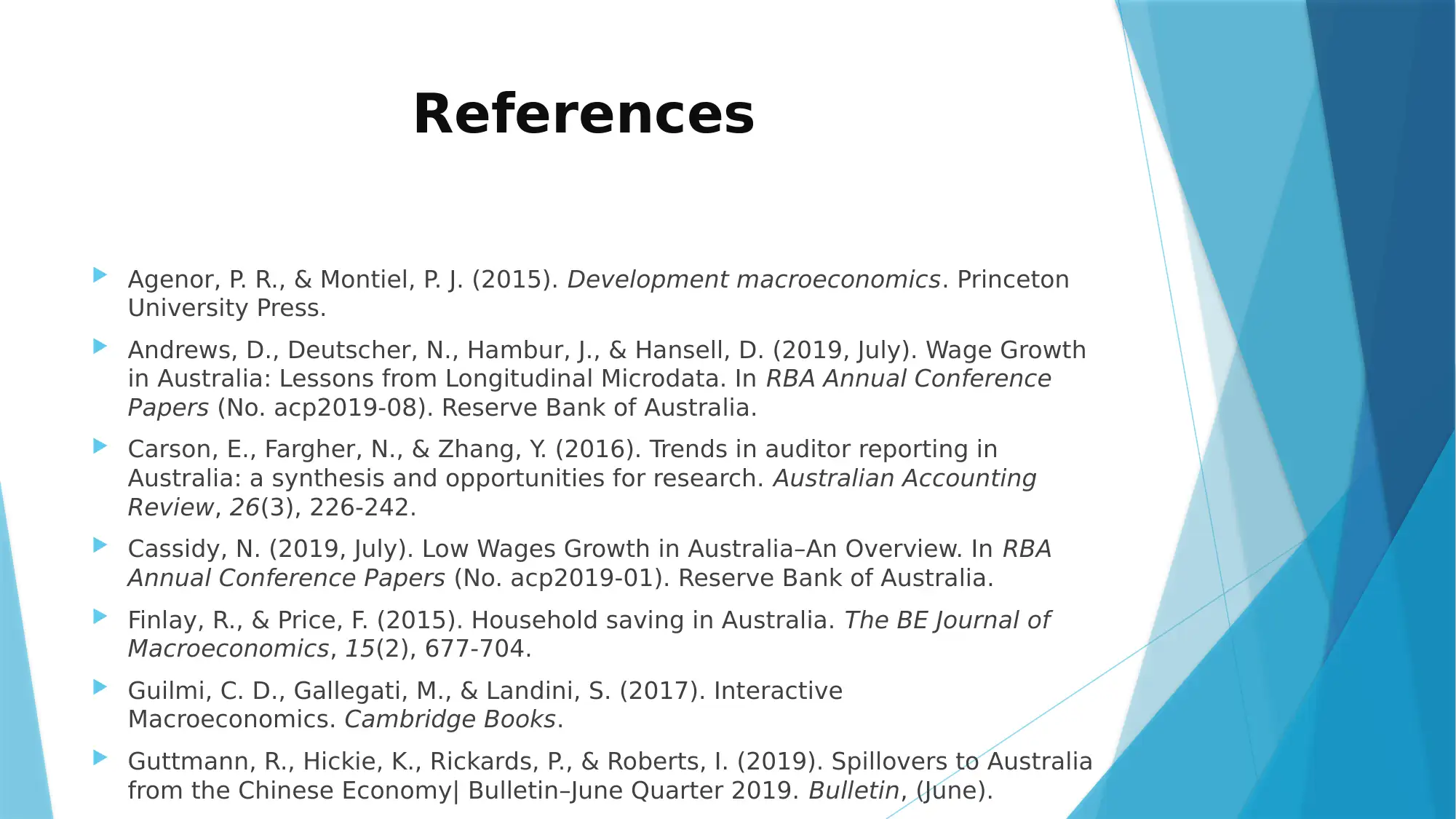
References
Agenor, P. R., & Montiel, P. J. (2015). Development macroeconomics. Princeton
University Press.
Andrews, D., Deutscher, N., Hambur, J., & Hansell, D. (2019, July). Wage Growth
in Australia: Lessons from Longitudinal Microdata. In RBA Annual Conference
Papers (No. acp2019-08). Reserve Bank of Australia.
Carson, E., Fargher, N., & Zhang, Y. (2016). Trends in auditor reporting in
Australia: a synthesis and opportunities for research. Australian Accounting
Review, 26(3), 226-242.
Cassidy, N. (2019, July). Low Wages Growth in Australia–An Overview. In RBA
Annual Conference Papers (No. acp2019-01). Reserve Bank of Australia.
Finlay, R., & Price, F. (2015). Household saving in Australia. The BE Journal of
Macroeconomics, 15(2), 677-704.
Guilmi, C. D., Gallegati, M., & Landini, S. (2017). Interactive
Macroeconomics. Cambridge Books.
Guttmann, R., Hickie, K., Rickards, P., & Roberts, I. (2019). Spillovers to Australia
from the Chinese Economy| Bulletin–June Quarter 2019. Bulletin, (June).
Agenor, P. R., & Montiel, P. J. (2015). Development macroeconomics. Princeton
University Press.
Andrews, D., Deutscher, N., Hambur, J., & Hansell, D. (2019, July). Wage Growth
in Australia: Lessons from Longitudinal Microdata. In RBA Annual Conference
Papers (No. acp2019-08). Reserve Bank of Australia.
Carson, E., Fargher, N., & Zhang, Y. (2016). Trends in auditor reporting in
Australia: a synthesis and opportunities for research. Australian Accounting
Review, 26(3), 226-242.
Cassidy, N. (2019, July). Low Wages Growth in Australia–An Overview. In RBA
Annual Conference Papers (No. acp2019-01). Reserve Bank of Australia.
Finlay, R., & Price, F. (2015). Household saving in Australia. The BE Journal of
Macroeconomics, 15(2), 677-704.
Guilmi, C. D., Gallegati, M., & Landini, S. (2017). Interactive
Macroeconomics. Cambridge Books.
Guttmann, R., Hickie, K., Rickards, P., & Roberts, I. (2019). Spillovers to Australia
from the Chinese Economy| Bulletin–June Quarter 2019. Bulletin, (June).

References
Kohler, M., & Van Der Merwe, M. (2015). Long-run trends in housing price
growth. Reserve Bank Bulletin, 2015, 21-30.
Lardy, N. R. (2016). China: Toward a consumption-driven growth path. In Seeking
Changes: The Economic Development in Contemporary China (pp. 85-111).
Lin, W., & Cheng, Y. (2016). The Bank Credit Transmission Channel of Monetary
Policy in Australia. International Journal of Financial Economics, 5(2), 61-65.
Loukoianova, M. E., Wong, Y. C., & Hussiada, I. (2019). Household Debt,
Consumption, and Monetary Policy in Australia. International Monetary Fund.
Stapledon, N. (2016). The inexorable rise in house prices in Australia since 1970:
Unique or not?. Australian Economic Review, 49(3), 317-327.
Wu, J. C., & Xia, F. D. (2016). Measuring the macroeconomic impact of monetary
policy at the zero lower bound. Journal of Money, Credit and Banking, 48(2-3),
253-291.
Kohler, M., & Van Der Merwe, M. (2015). Long-run trends in housing price
growth. Reserve Bank Bulletin, 2015, 21-30.
Lardy, N. R. (2016). China: Toward a consumption-driven growth path. In Seeking
Changes: The Economic Development in Contemporary China (pp. 85-111).
Lin, W., & Cheng, Y. (2016). The Bank Credit Transmission Channel of Monetary
Policy in Australia. International Journal of Financial Economics, 5(2), 61-65.
Loukoianova, M. E., Wong, Y. C., & Hussiada, I. (2019). Household Debt,
Consumption, and Monetary Policy in Australia. International Monetary Fund.
Stapledon, N. (2016). The inexorable rise in house prices in Australia since 1970:
Unique or not?. Australian Economic Review, 49(3), 317-327.
Wu, J. C., & Xia, F. D. (2016). Measuring the macroeconomic impact of monetary
policy at the zero lower bound. Journal of Money, Credit and Banking, 48(2-3),
253-291.

Thank You
1 out of 19
Related Documents
Your All-in-One AI-Powered Toolkit for Academic Success.
+13062052269
info@desklib.com
Available 24*7 on WhatsApp / Email
![[object Object]](/_next/static/media/star-bottom.7253800d.svg)
Unlock your academic potential
© 2024 | Zucol Services PVT LTD | All rights reserved.





